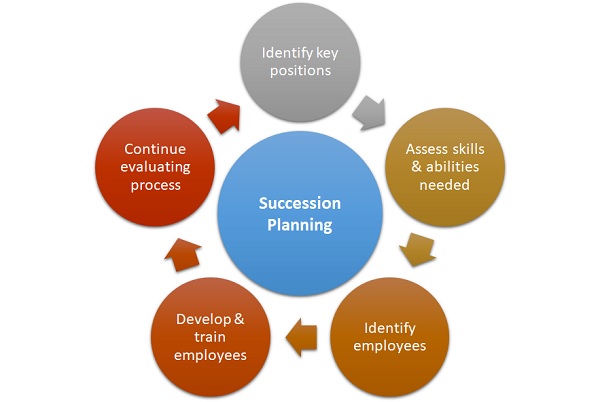- Business Concepts ›
- Human Resources (HR) ›
- Succession Planning
Succession Planning
Definition, Importance, Process & Example
This article covers meaning & overview of Succession Planning from HRM perspective.
What is meant by Succession Planning?
Succession planning is a human resource development activity in which key employees are identified, groomed and prepared for succeeding onto the key leadership positions from within the organization. Under succession planning, companies identify critical organization positions for which existing employees need to be prepared for. This is a critical process in HRM keeping in mind the long term requirements of a company.
Importance of Succession Planning
In every company, there are certain critical positions which always need to be held by key persons having high business acumen, strong leadership skills & must be able to motivate their respective teams & functions. To make sure that companies keep on functioning efficiently, there is a process to groom, train, skill & retain employees who care take-up such critical roles. This process is known as succession planning. This is an important activity which ensures that under any unfortunate circumstances, the company roles must be filled by highest efficient & motivated employees.

Read More
Succession Planning Process
The systematic approach & process which are used for training & grooming employees for the future are:
1. Identify key positions
There are certain important positions in the organization which cannot be filled without planning and through external hiring. For those positions, a candidate who understands the company, processes and has proven record would be more fit. Such positions need to be identified before starting the succession plan.
2. Assess skills & abilities needed
Next step is to understand the skills and qualifications required for performing in those key positions in the organization. In the plan made for the new employee, skill gaps need to be identified and rectified.
3. Identify employees
Next and most important step is to identify the right employees who are not only fit for the roles but also willing to take on the next key position and be a future leader in the organization.
4. Develop & Train employees
Once the positions and the employees are identified, right training programs and grooming need to be planned for these key employees. Many skills need to be developed over a period of time which will lead to them being ready for next step.
5. Continue Evaluating process for the future
Once the employees have started taking the new roles, proper evaluation should be done on the performance, motivation and results of the job role change. Feedback should be taken from the promoted employees on what could be improved for next batch.
This process needs to be elaborately defined to prepare successors for key company roles in the future.
Reasons for Succession Planning
There are many reasons why companies keep successors ready for important roles. Some of the main reasons are:
1. Retirement of senior employees.
2. Resignation of key leaders.
3. Untimely death of high-level employees.
4. Creating new senior position.
5. Redeployment of key employees in different roles.
All these are some of the key reasons why succession planning is started early for planning better for the future.
Succession Planning Example
Let us say a company ABC which is into smartphone manufacturing is planning to fill some key positions in the marketing and operations departments. The identified positions are of the Brand head and COO as the current members are retiring or moving on in near future. One option is to hire externally but the company being a leader in the market wants to get the right candidate who understands not only the business but also knows the company and its values really well.
ABC would definitely opt for succession planning in this case. Key candidates can be from these departments who are working closely with the current leaders and know the business and company well. Proper grooming, training and knowledge transition can really help them take up the role in future. With proper job enlargement and enrichment techniques, the key candidates can be planned for the 2 key positions.
Hence, this concludes the definition of Succession Planning along with its overview.
This article has been researched & authored by the Business Concepts Team which comprises of MBA students, management professionals, and industry experts. It has been reviewed & published by the MBA Skool Team. The content on MBA Skool has been created for educational & academic purpose only.
Browse the definition and meaning of more similar terms. The Management Dictionary covers over 1800 business concepts from 5 categories.
Continue Reading:
What is MBA Skool?About Us
MBA Skool is a Knowledge Resource for Management Students, Aspirants & Professionals.
Business Courses
Quizzes & Skills
Quizzes test your expertise in business and Skill tests evaluate your management traits
Related Content
All Business Sections
Write for Us